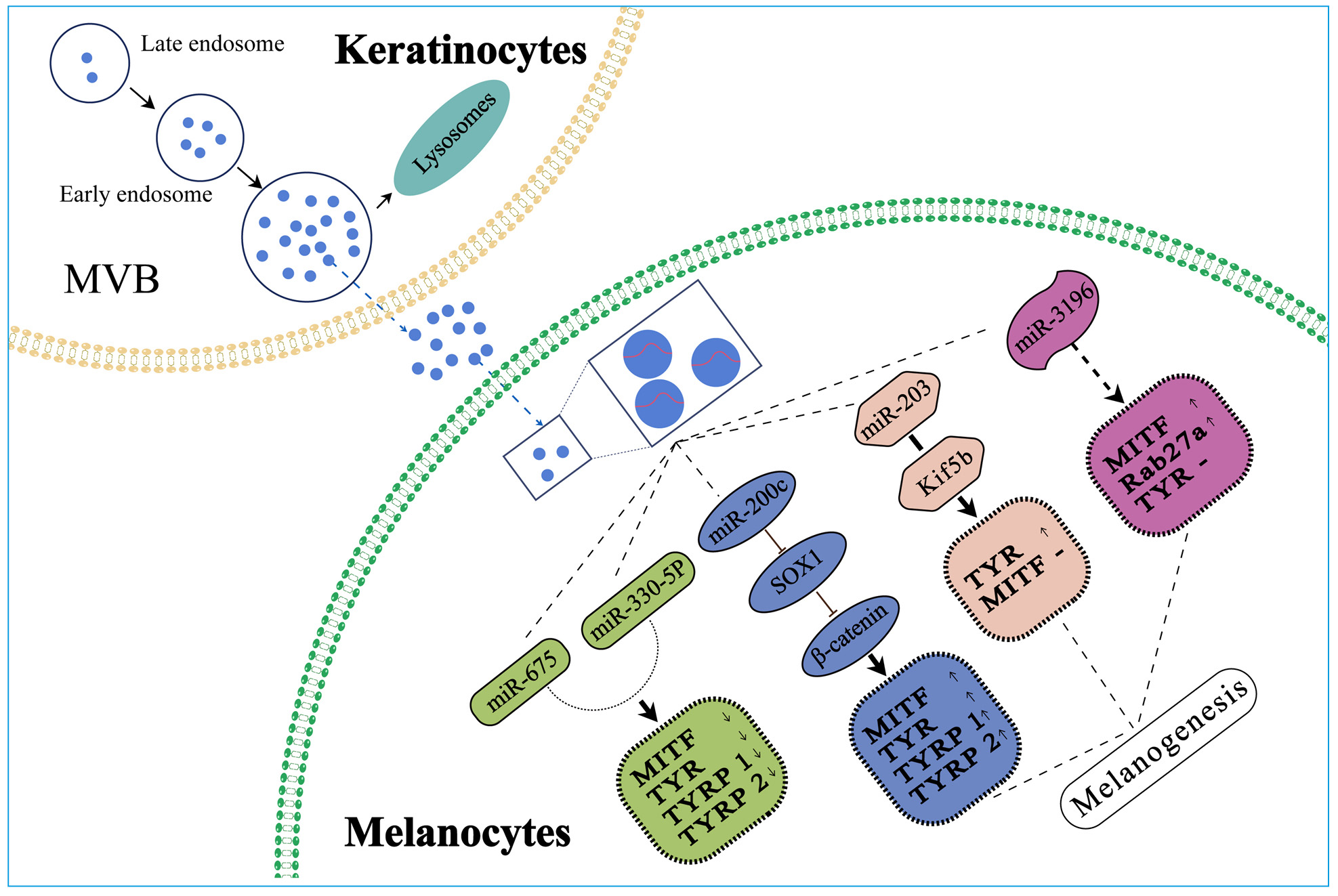Biological characteristics of keratinocyte-derived exosomes and their significance in vitiligo pathogenesis.

Downloads
DOI:
https://doi.org/10.26326/2281-9649.33.2.2494How to Cite
Abstract
Keratinocyte-derived exosomes (KDEXs) are considered as carriers for information exchange between keratinocytes (KCs) and melanocytes (MCs), and carry bioactive substances with important physiological functions, including mRNAs, miRNAs, cytokines, et al. The components and functions of KDEXs differed significantly among individuals with different skin phototypes. When co-cultured with MCs from Caucasians, KDEXs from dark-skinned individuals promoted melanogenesis, whereas KDEXs from light-skinned individuals did so only after exposure to UV radiation. Skin exposure to UVB radiation leads to changes in total amount and components of KDEXs, especially expression profiles of miRNAs. KDEXs play important roles in all aspects of vitiligo development, progression and repigmentation by regulating CD8+ T, Treg and Th17 cells, thereby restoring local immune homeostasis. The in-depth study of KDEXs is expected to provide new options for the treatment of vitiligo.
